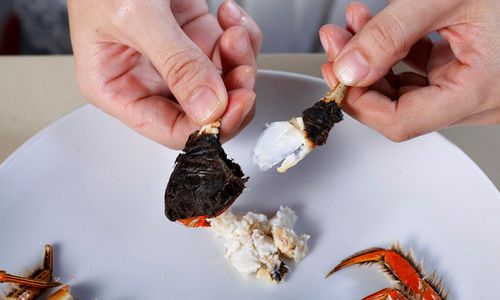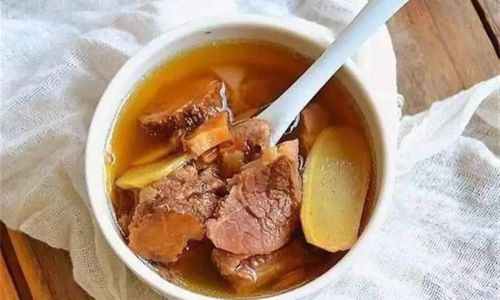Introduction
Crabs, with their delicate flavors and rich textures, are a culinary delight enjoyed across various cultures worldwide. Whether boiled, steamed, grilled, or incorporated into complex dishes, fresh crabs offer a unique eating experience that is both savory and satisfying. However, before indulging in this seafood delicacy, it is crucial to ensure that they are properly cleaned. Improper cleaning can lead to contamination, compromising both the taste and safety of the final dish. This comprehensive guide aims to provide you with the correct way to clean fresh crabs, ensuring that your culinary adventure remains enjoyable and safe.

Understanding Crab Varieties
Before diving into the cleaning process, it’s essential to understand the different types of crabs available. Common varieties include blue crabs, Dungeness crabs, snow crabs, king crabs, and stone crabs. Each species has its unique characteristics, such as shell hardness, size, and habitat, which can influence the cleaning method. For instance, blue crabs, often found in coastal waters, have a softer shell compared to the harder shells of king crabs, which inhabit deeper, colder waters.
Importance of Proper Cleaning
Proper cleaning of fresh crabs serves several purposes:
- Food Safety: Removes dirt, sand, and potential contaminants from the crab’s exterior and internal cavities.
- Enhances Flavor: Reduces the risk of off-flavors caused by impurities.
- Improves Texture: Ensures that the crab meat is tender and free from grit.
- Aesthetic Appeal: Clean crabs make for a more appetizing presentation on the plate.
Tools and Equipment Needed
To effectively clean fresh crabs, you will need the following tools and equipment:
- A sharp knife or crab cracker
- Rubber gloves for protection
- A large bowl or sink filled with cold, running water
- A brush with stiff bristles (a vegetable brush works well)
- A pair of scissors or crab scissors (specifically designed for crab cleaning)
- A small, sharp paring knife
- A cutting board
- A colander or strainer for rinsing
- A clean kitchen towel or paper towels
Step-by-Step Cleaning Process

-
Preparation and Safety Measures
- Wear rubber gloves to protect your hands from cuts and potential allergens.
- Ensure your workspace is clean and organized to avoid cross-contamination.
- Keep a bowl of cold water nearby to rinse your hands and tools frequently.
-
Initial Rinse
- Place the crabs in a large bowl or sink filled with cold, running water.
- Allow them to soak for a few minutes to loosen any dirt or debris.
- Rinse them gently under running water, being careful not to break the shells.
-
Brushing the Exterior
- Use a brush with stiff bristles to scrub the exterior of each crab thoroughly. Pay special attention to the crevices and joints where dirt and sand can accumulate.
- Rinse the crab under running water after brushing to remove any loosened debris.
-
Removing the Apron and Gills
- The apron is the triangular-shaped flap found under the crab’s body. Gently pull it off and discard it. This step is crucial as the apron can harbor impurities.
- Turn the crab over to expose the gills, which are feathery structures located on the sides of the crab’s body under the shell. Use scissors or crab scissors to carefully cut and remove the gills. The gills can harbor bacteria and should not be consumed.
-
Cleaning the Underside
- Examine the underside of the crab, particularly the area around the mouthparts. Use a small, sharp paring knife to scrape away any dirt or debris.
- Rinse the crab thoroughly under running water to ensure all removed parts and debris are washed away.
-
Inspecting and Cleaning the Claws and Legs
- Examine the claws and legs for any embedded dirt or debris. Use the brush to clean them thoroughly.
- If necessary, use the crab cracker or knife to gently crack open the claws to remove any trapped sand or grit. Be cautious not to damage the meat inside.
-
Final Rinse and Drain

- Once all visible dirt and debris have been removed, give the crab a final rinse under cold, running water.
- Place the crab in a colander or strainer to drain excess water.
-
Handling Live Crabs
- If working with live crabs, it’s important to handle them carefully to avoid injury. You may need to chill or stun the crabs before cleaning to minimize their movement.
- Never immerse live crabs in fresh water, as this can cause them to aspirate and die. Instead, use a damp cloth or keep them in a cool, moist environment until ready to clean.
Post-Cleaning Tips
- Once cleaned, crabs can be cooked immediately or stored in the refrigerator for later use. Wrap them tightly in plastic wrap or store them in an airtight container lined with damp paper towels to maintain moisture.
- If storing for later use, consume within a day or two to ensure freshness and quality.
Conclusion
Cleaning fresh crabs may seem like a daunting task, but with the right tools, techniques, and precautions, it can be a rewarding experience. By following the steps outlined in this guide, you can ensure that your crabs are not only clean and safe to eat but also retain their natural flavors and textures. Remember, the key to successful crab cleaning lies in thoroughness and attention to detail. With practice, you’ll soon master the art of preparing fresh crabs, ready to be transformed into a culinary masterpiece. Enjoy your seafood adventure!





0 comments